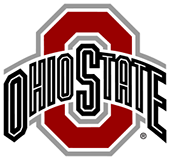Search
Local News
Lake Improvement Association holds August Meeting
To view the August 2025 Meeting of the Lake Improvement Association:
The following is an AI Generated summary of the August 2nd meeting of the Lake Improvement Association:
Meeting Notes
1. Lake management, event planning, park operations, and environmental quality updates
-
Financial & Checkbook Update
The meeting started with a financial update detailing a few outstanding bills, a current monthly income of about $150, expenditures such as $4,300 for maps and lake supplies, and a checkbook balance of $53,275 after all bills were paid.
-
Event Announcements & Fundraising
Announcements included past events like Boardwalk Fest with a 50-foot cornhole toss and a 50-50 raffle raising over $500, updates on playground installations, the introduction of three new swings, and details about the upcoming Barstool Open fundraiser next Saturday with early bird pricing saving $20 per team, expected 200 teams and 800 attendees, plus new contests and a duck tube raffle valued at $440.
-
Recreational Map & Digital Engagement
New lake maps were printed and distributed, featuring QR codes that link to the Grand Lake app for events, an interactive map, and the new Grand Lake trails website highlighting wetlands trails installed around the lake.
-
Kids Fishing Derby Volunteer Call
The annual kids fishing derby is scheduled for Wednesday, September 10th. Volunteers are needed to help with tasks including baking cookies, brownies, baiting hooks, and assisting with fish removal. Interested parties were asked to contact the team or speak directly with Jeff Vossler.
-
State Park Operations & Updates
State Park Manager David Faler provided updates including lake level at plus one inch, gates open three inches, July 2025 rainfall of 5.13 inches and yearly rainfall of 20.15 inches, full camp occupancy since Memorial Day with 45-60% weekday occupancy, upcoming Fall Fest from September 5th to 7th and Halloween weekend from October 3rd to 5th, installation of two new docks, changes in camp store hours, and a new parking lot installation on the west bank near the dog park.
-
Environmental & Water Quality Update
Dr. Stephen Jacquemin detailed the progress of wetlands around Grand Lake St. Mary's, noting an increase from less than half a percent to approximately 2 1⁄2% of the watershed as wetland habitat. The update included specific water flow figures: Prairie Creek at about 1.5 million gallons per day, Beaver Creek at about 0.5 million gallons per day, Coldwater Creek at around 2.5 to 3 million gallons per day, and Burntwood Creek at about 0.5 million gallons per day, along with improvements through enhanced pumping capacity.
2. Lake Restoration and Algal Bloom Management
-
Wetlands Nutrient Removal and Impact on Lake Water Quality
Discussed wetlands' effectiveness in removing 50% to 75% of total phosphorus (and sometimes above 75% of dissolved phosphorus) and over 75% of nitrogen from streams, preventing these nutrients from reaching the lake to limit algal bloom growth.
-
Algal Bloom Toxin Levels and Measurement
Reviewed a graph displaying toxin production (microcystin) with weeks on the x-axis and toxin intensity on the y-axis. Historical averages over the last decade are compared to this year's data, which has largely been below the historic line with values as low as 10 micrograms per liter and some weeks under 8 micrograms per liter from data at Celina Water Treatment Plant.
-
Role of Nutrient Loading and Runoff Events
Explained nutrient loading dynamics where phosphorus drives biomass and nitrogen drives toxicity. Spikes observed in week 20 and week 25 were attributed to spring runoff and large precipitation events respectively, including discussion on legacy phosphorus from sediment under low dissolved oxygen conditions.
-
Community Engagement and Wetland Restoration Tours
Outlined recent events: the State Director's Tour hosted by Lake Restoration about a month ago, the Mercer County AG education series with the Grand Lake St. Marys wetland tour, and a special tour for the Ohio EPA. These events showcased data from wetlands, best management practices over the past decade, and restoration projects.
-
Discussion on Ohio EPA Advisory Line and Beach Signs
Addressed questions related to the Ohio advisory line on beach signs, which is based on federal recommendations and a threshold of 8 micrograms per liter. Explained conditions required (two consecutive weeks below 8 micrograms per liter) to consider removing red warning signs.
Conclusion
Wetlands are effectively reducing the nutrient load entering the lake, contributing to lower toxin levels in algal blooms.
Toxin levels remain low despite visible algae biomass, indicating a successful reduction in toxin production.
Nutrient spikes due to runoff events are natural but are being moderated through improved management practices.
Community tours and stakeholder engagements have been key in disseminating successes and lessons learned in wetland restoration.
There is cautious optimism that with continued nutrient management, the advisory thresholds may eventually be consistently met, leading to potential sign removal.
3. Environmental water quality improvements and historical canal infrastructure development
-
Expanding Aquatic Vegetation at Prairie Creek
Discussion on the expanding patch of lily pads observed at the mouth of Prairie Creek where it meets the lake. The speaker noted that the lily pads, first observed a couple (or even three) years ago, have been expanding annually. Their presence in three, four, and even five feet of water indicates that photosynthetically active radiation (PAR) from the sun is penetrating deeper than before, which is a positive sign for water quality. This may help decrease harmful algal blooms by reducing nutrients available for the algae.
-
Water Quality Sampling Methods
The meeting detailed the various measurement methods used to assess water quality in the lake. Sampling points include the wetland inflow from the stream, the wetland outflow, several points within the middle of the wetland, and various beaches (e.g., Sunset Beach, Campground Beach, Windy Point) monitored by ODNR. In addition, long-term data from the Celina lighthouse area, near the Salina water treatment plant intake, as well as boat samples from the middle of the lake, are incorporated to capture a comprehensive picture of the lake's water quality.
-
Historical Connection Between the Miami and Erie Canal and Grand Lake
Steve Dorsten discussed the historical development and significance of Ohio's canal system. He recalled the hiring of engineer James Geddes to plan a canal from Cincinnati to Cleveland, the ensuing challenges, and subsequent route adjustments leading to the establishment of two routes: one from Cleveland to Portsmouth (Ohio Area Canal) and the other from Cincinnati to Dayton with intentions to extend north to Toledo. Key historical dates include July 21st, 1825, when canal digging began in Middletown, and reference to Ohio's Canal Seal dated 1802, which highlights early promotion of canal infrastructure in Ohio.
Conclusion
The increasing aquatic vegetation is encouraging and may lead to a reduction in both toxicity and biomass of harmful algal blooms.
4. Historical development and multifunctional benefits of the Miami Area Canal
-
History and Purpose of the Miami Area Canal
Discussed how Indiana's plan to build a canal from Huntington along the Ohio River to Toledo prompted local leaders to extend the existing Miami canal from Dayton to Toledo, connecting Lake Erie and the Ohio River and marking a major incentive for the project's development.
-
Economic Benefits and Water Power
Outlined the canal's role in transportation with canal boats such as the 'Marguerite of Delta' carrying 90% of passengers and goods. The canal also enabled local economic growth by powering mills via 105 blocks along its 250-mile length
-
Recreation, Hunting, and Ice Harvesting
Discussed diverse canal uses including leisure activities (fishing, bird watching, jogging, biking), waterfowl hunting, and ice harvesting during winter. Ice houses were established along the canal system to store and sell blocks of ice year-round.
-
Fire Protection and Flood Control
Explained the canal's role in emergency services. Fire departments used water from the canal to combat major fires in locations such as Saint Marys and industrial areas. Additionally, the Army Corps of Engineers manages flood control through structures like 10-foot wide tainter gates and spillways, with crews available 24/7.
-
Engineering Challenges and Summit Reservoirs
Detailed the challenge of moving water over a 512-foot summit (Army Sea Summit) from Cincinnati (Ohio River) to Toledo (Lake Erie or 395 feet above Lake Erie). Described innovative solutions including damming feeder streams, building reservoirs such as the one at Warmey Creek, Grand Lake (initially 17,000 acres then reduced to 13,000 acres), Lake Larby (1,665 acres), and Lewistown Reservoir (Indian Lake, 5,800 acres), along with the design of slide gates.
-
Connection Between Grand Lake and the Miami-Erie Canal
Outlined how the bulkhead on State Route 364, featuring two slide gates (one 4x4 feet and the other 4x5 feet), manages the flow of water between Grand Lake and the canal, ensuring continuous water movement through Delta.
-
Comparative Canal Lengths
Briefly compared regional canal lengths: the Miami area canal at 250 miles, Ohio canals at 305 miles, and the Wall Bayasian area exceeding 400 miles, highlighting the scale of canal infrastructure within the region.
5. Canal/Trail Maintenance, Historic Canal Operations, and Environmental Scholarship Initiatives
-
Canal and Trail System Maintenance & Historic Canal Use
The discussion focused on the multi-use nature of the trail system which includes the Fort Laramie trail, the State Miami Area Canal Trail, the Buckeye Trail, and the North Country Trail. It covered various trail surfaces (crushed limestone, asphalt, turf) and maintenance challenges such as storm damage, falling trees due to emerald ash borer issues, and aquatic vegetation in areas like Forty Acre Pond. Historical canal operations were detailed with exact dates and figures: initial use from 1825 to 1827, peak operations around 1851 and 1852, continued activity up to 1919, a 68-foot fall at New Bremen/St. Mary's, and a 44-foot fall from Spencerville to Delphos. The condition of locks (with original timber structures and present sills only) and water management practices
-
Environmental Scholarship and Community Investment
Dr. Jacquemin announced that the board approved and funded scholarships for Wright State Lake Campus environmental students, funded by the Lake Improvement Association. It was noted that these scholarships, which support water quality data collection and provide benefits to undergraduate education in the community, are expected to be implemented this fall.
Next Arrangements
-
Sign up teams for the Barstool Open fundraiser with early bird pricing.
-
Distribute updated lake maps with QR codes and promote digital engagement.
-
Coordinate volunteer roles for the September 10th kids fishing derby.
-
Finalize the installation timeline for the shelter house and playground swings.
-
Implement camp dock installations and adjust parking lot access as per state park update.








